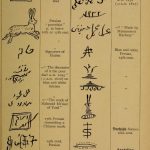 In 1939 President Franklin Delano Roosevelt issued a proclamation designating August 19th, the anniversary of pioneer aviator Orville Wright’s birthday, to be National Aviation Day.
In 1939 President Franklin Delano Roosevelt issued a proclamation designating August 19th, the anniversary of pioneer aviator Orville Wright’s birthday, to be National Aviation Day.
Smithsonian Libraries and Archives / Unbound

In addition to rich files housing a range of materials, artists are searchable in an online database and books, images, and periodicals are being digitized and made freely available to users worldwide. The Library also serves as a home for twenty research fellows each year, fostering the foundations for the next generation of American art scholars.
 Here’s the latest post in our series, Library Hacks, where we take a look at cool and interesting online resources from the Smithsonian Libraries and the cyberworld at large.
Here’s the latest post in our series, Library Hacks, where we take a look at cool and interesting online resources from the Smithsonian Libraries and the cyberworld at large.
We librarians are all about the organization of information. It’s what we live for! (Well, that might be overstating it a bit.) So when we find great tools for keeping track of info/data/stuff, we get pretty excited. While you may not have the same level of enthusiasm for this that we do, you still can find such tools useful for everything from doing research on a topic of interest, to writing a report for school or work, to collecting your favorite recipes from foodie websites.
 For the past two summers, three art libraries, the Hirshhorn Library (HMSG), the African Art Library (NMAA), and the American Art Library/National Portrait Gallery Library (AA/PG) have hosted graduate library student interns through the Smithsonian Libraries Professional Development Internship to work on the three libraries’ artists’ book collections.
For the past two summers, three art libraries, the Hirshhorn Library (HMSG), the African Art Library (NMAA), and the American Art Library/National Portrait Gallery Library (AA/PG) have hosted graduate library student interns through the Smithsonian Libraries Professional Development Internship to work on the three libraries’ artists’ book collections.
 The Book Conservation Lab periodically receives artist’s books from the Cooper-Hewitt National Design Museum Library with special housing needs.
The Book Conservation Lab periodically receives artist’s books from the Cooper-Hewitt National Design Museum Library with special housing needs.
 As you may already know, in addition to viewing pages from the online “flippy book”, or BookReader, the Internet Archive (our digitization partner and the SHAC collection’s current point of access) provides versions of digitized items in a variety of file formats so that the general public can download items for use offline or on mobile devices. And while we don’t actively retain granular usage statistics from IA, we get some idea of a title’s general popularity via the download numbers displayed on each item. So, while stopping short of providing objective data about the use of SHAC materials, these stats provide a glimpse into the active lives of the digitized collection. Without further ado, I present the 5 most popular titles from the Smithsonian History, Art, and Culture digital collection:
As you may already know, in addition to viewing pages from the online “flippy book”, or BookReader, the Internet Archive (our digitization partner and the SHAC collection’s current point of access) provides versions of digitized items in a variety of file formats so that the general public can download items for use offline or on mobile devices. And while we don’t actively retain granular usage statistics from IA, we get some idea of a title’s general popularity via the download numbers displayed on each item. So, while stopping short of providing objective data about the use of SHAC materials, these stats provide a glimpse into the active lives of the digitized collection. Without further ado, I present the 5 most popular titles from the Smithsonian History, Art, and Culture digital collection:


